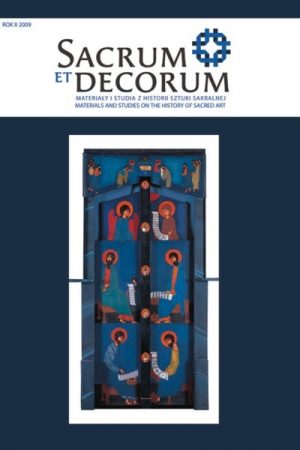Le vrai portrait de Notre-Dame. On the attempts to refresh the Marian iconography in the 19 th century
Keywords:
19TH CENTURY, FRANCE, MARIAN ICONOGRAPHY, MARIAN PIETY, RELIGIOUS ART, REVELATIONSAbstract
In the 19th century, France witnessed a significant revival of Marian piety, which manifested itself, among other things, in mass participation in May Masses and a surge in the number of Living Rosary Circles. Numerous apparitions of Mother Mary were reported in the country, some of which the Church recognized as 'worthy of credence'. It was under their influence that l'abbé Blanc came up with a proposal to reconstruct the true image of Mary based on the accounts of her appearance given by those who experienced revelations. The results, however, proved disappointing. The appearance of Mother Mary, as seen by Catherine Labouré in the chapel of Rue du Bac, was 'corrected' to such an extent that the 'miraculous medallion' can be shown to have the actual prototype in the rococo statue of the Immaculate from the Parisian church of Saint-Sulpice. No better were the results of recording the image reported by the children of La Salette. Barréme d'Angers, a provincial sculptor, crowded every detail they described into a single figure of Mary; Joris Karl-Huysmans argued it made the Mother of God resemble an Iroquois in a headdress. A much more talented artist, Joseph-Higes Fabisch set out to sculpt the statue of Our Lady of Lourdes, using the account given by Bernadetta Soubirous as the basis for a 'memory portrait' of the Holy Virgin; the girl's memories were supplemented with reproductions of earlier art works. Even though the cooperation between Soubrious and the artist initially seemed to go well, the girl burst into tears upon seeing the finished statue. She commented that the image lacked the 'remarkable simplicity' of the Beautiful Lady. One reason for all these failures, argues Labouré, was 'the hubris of earthly artists', who groundlessly believed themselves capable of rendering supernatural visions in their material images. Some blame should probably also go to the clergy, who were too afraid of offending renowned sculptors to heed the objections voiced by the witnesses. Once the attempt at reviving the iconography of Mother Mary on the basis of revelations ended in failure, the church lost all faith in the skills of contemporary artists and began to disseminate the exact reproductions of medieval Marian images as the sole object of worship.Downloads
Downloads
Published
How to Cite
Issue
Section
License
Copyright (c) 2009 Sacrum et Decorum

This work is licensed under a Creative Commons Attribution-NonCommercial-NoDerivatives 4.0 International License.
In line with the Open Access policy, authors retain full copyright to their articles – without restrictions.
Authors can deposit their articles in a repository of their choice.


